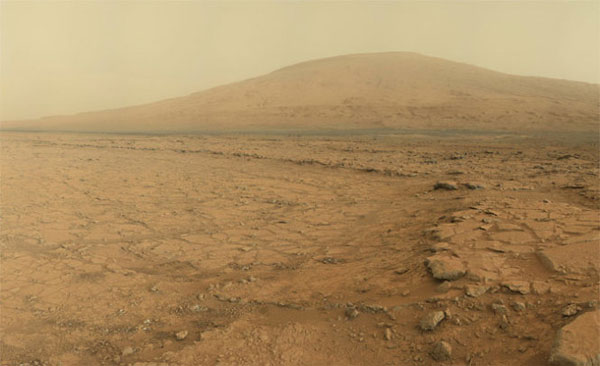Found many signs of life on Mars
On December 9, the US Aeronautics Agency (NASA) announced Curiosity autonomous robot (Curious) to find signs that the lake used to exist and bacteria proliferate on Mars.
According to USA Today, NASA said images and soil samples collected by Curiosity robot show that many rivers have flowed to a large lake or many small lakes and even the delta areas at the bottom of the Gale valley for many millions of years. before. NASA experts call it Gale Lake .
Gale Lake has become an ideal environment for bacterial life to flourish in millions, even tens of millions of years. The survey shows that the surface of Gale Lake has dried up long ago but water can still exist in the ground.
'The existence of Lake Gale provides enough time for life to grow,' said NASA scientist Michael Meyer.

Photo of Curiosity robot capturing Mars surface - (Photo: NASA)
Earlier the Curiosty robot also found traces of a lake in the Yellowknife area Flying on the surface of Mars. Experiments show that water used to exist in this area is fresh and drinkable.
The expert team from NASA's Mars Exploration Program (MEP) assesses all evidence that lakes and deltas used to exist on the surface of Mars in the past. This shows that Mars in the past had the ideal conditions for life to exist.
'As a science group, Mars is very attractive to us, having enough elements of a planet to be accessible - Dr. John Grotzinger of the MEP emphasized - Not just the area at Gale Lake or some place. different in different stages throughout Mars'.
Recently, Curiosity robot also discovered traces showing some organic compounds, the foundation of life, exist on the surface of Mars.
NASA will hold a press conference on December 14 to announce 'new information' about the search for organic compounds on Mars.
Expert Roger Summons of the MEP evaluated the collected Curiosity data, suggesting that early Mars was quite similar to Earth. In the first 1 billion years, both planets have a stable environment, suitable for life.
Scientists have determined that life began to germinate on Earth 3.8 billion years ago and the same could have happened on Mars. However, the similarity with the Earth is lost after Mars lost its atmosphere at the end of the first 1 billion years.
- NASA found signs of life on Mars
- Signs of life on Mars
- Video: Detecting the sign of Mars around the equator
- Be overwhelmed by images of life on Mars that may appear in the future
- Russia and Europe all look for life on Mars
- Detecting signs of water flowing on Mars
- Life may have existed 700 million years on Mars
- NASA revealed the mission of the next Mars probe
- Meteors show signs of life outside of Earth
- Survive life on the surface of Mars
- Measure the atmospheric composition to find life in Mars
- Mars can nourish life
 Van Allen's belt and evidence that the Apollo 11 mission to the Moon was myth
Van Allen's belt and evidence that the Apollo 11 mission to the Moon was myth The levels of civilization in the universe (Kardashev scale)
The levels of civilization in the universe (Kardashev scale) Today Mars, the sun and the Earth are aligned
Today Mars, the sun and the Earth are aligned The Amazon owner announced a secret plan to build a space base for thousands of people
The Amazon owner announced a secret plan to build a space base for thousands of people